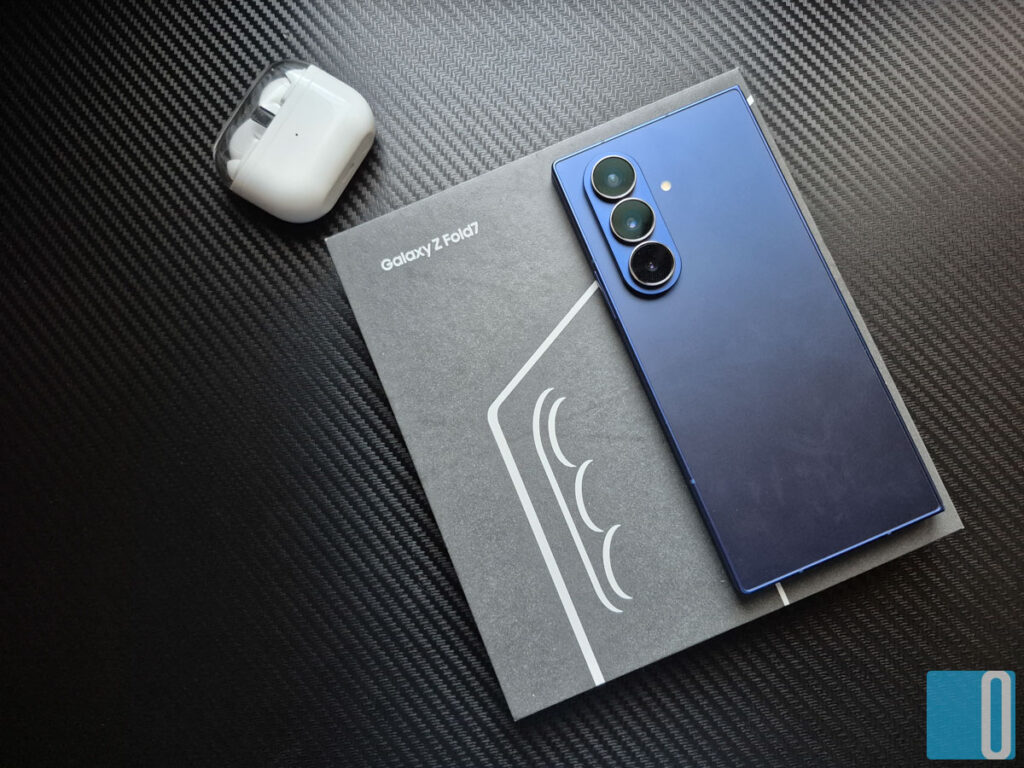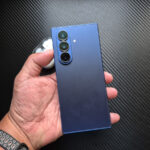Samsung Galaxy Z Fold7
From RM7,799.00If you’ve followed Samsung’s foldable journey since the first Galaxy Fold, you’ll know it’s been a story of ambition meeting compromise. Every generation fixed something but left you wishing for more. The Galaxy Z Fold7, though? It feels like the series has finally grown up. It’s thinner, lighter, more refined, and more confident about what it is. A phone-tablet hybrid that’s no longer trying to prove itself. The only catch? You’ll need to part with MYR7,799.00 (at minimum) to get one. So yeah, it’s still a luxury purchase, but this time, it feels like a more justifiable one.
Let’s unpack everything this futuristic gadget brings to the table (and your pocket).
First Impressions and Design
The first thing you notice when picking up the Galaxy Z Fold7 is how shockingly slim it is. Seriously, it feels like someone put the Fold on a hydraulic press. Folded, it’s just 8.9mm thick, basically the size of a normal phone and unfolded, it measures a wild 4.2mm. That’s thinner than the Galaxy S25 Edge. The weight also dropped to 215g, which puts it in the same ballpark as most big flagship phones. That alone changes the entire experience. It no longer feels like you’re carrying around a tech prototype or a tiny laptop in your pocket.
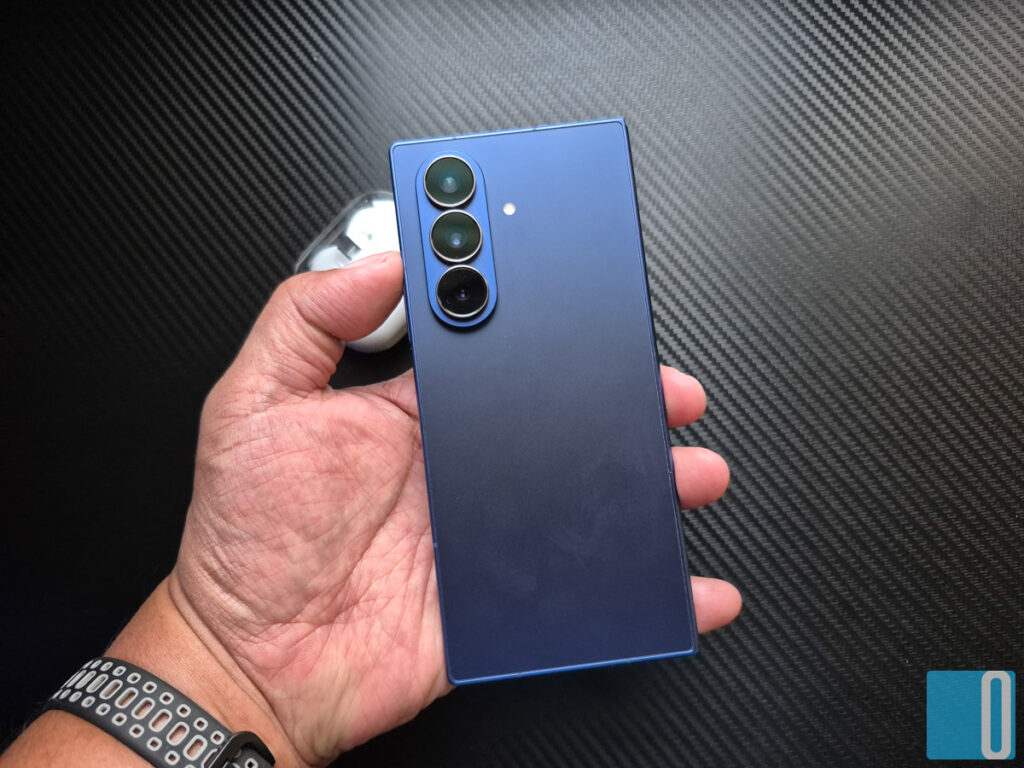
That thinness does have a tradeoff, though. The camera bump looks massive now, sticking out about 5.5mm from the back. But the rest of the phone’s design makes up for it. The Advanced Armor Aluminum frame feels solid, and Gorilla Glass Ceramic 2 keeps the outer display safe from scratches. The hinge is tighter, smoother, and easier to open with one hand. Overall, the Galaxy Z Fold7 feels like a premium, well-engineered object rather than a fancy concept device.
The cover screen finally feels right too. Samsung tweaked the aspect ratio to 21:9, which might sound small on paper but makes a world of difference in daily use. Typing, scrolling and messaging all feel natural now, like using a regular Android phone. The screen itself is a 6.5-inch Dynamic AMOLED FHD+ 120Hz panel, as bright and vivid as you’d expect.
Then there’s the main 8-inch foldable display, which opens up to a nearly square 6:5 ratio. It’s big enough to comfortably browse, sketch, or edit photos, and small enough that you can still manage it with two hands. Samsung’s biggest win here is the crease, or rather, the lack of one. It’s still faintly visible under glare but no longer distracting. After a few days, you almost forget it’s there.
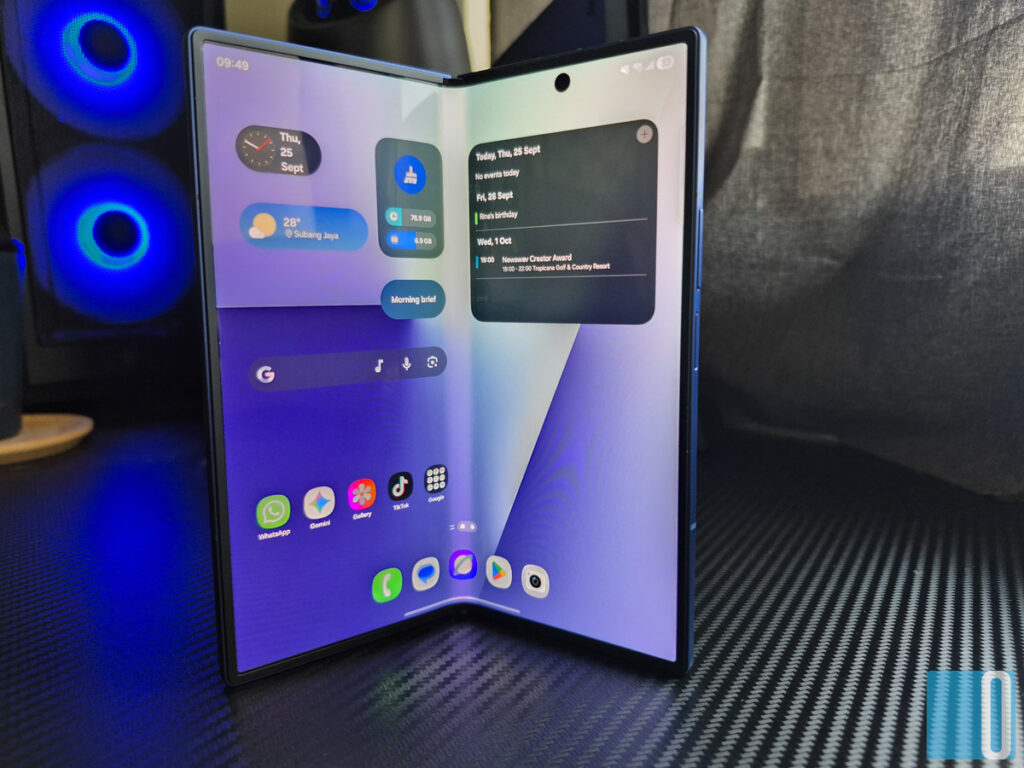
Now, it’s worth noting that while the Galaxy Z Fold7 carries an IP48 rating, it’s still not fully dustproof. And the inner screen is covered with a softer layer that loves fingerprints. So yes, it’s tougher than before, but still not something you want to drop on gravel. Also, the S Pen support is gone. Samsung apparently ditched the digitizer layer to keep the phone so thin, which is a shame if you liked jotting notes on the big screen.
Performance and Everyday Use
Under the hood, the Samsung Galaxy Z Fold7 packs a serious punch thanks to the Snapdragon 8 Elite for Galaxy, Qualcomm’s latest 3nm powerhouse that’s been fine-tuned specifically for Samsung’s premium devices. It’s the same chip running in the Galaxy S25 lineup, but here it feels even more impressive because it’s pushing all that performance through an ultra-thin foldable body. You’re looking at an overclocked configuration that not only runs cooler than before but also delivers snappier response times across the board.
Multitasking on the Galaxy Z Fold7 feels effortless. The base model ships with 12GB of RAM and 256GB of storage, but you can bump that all the way up to 1TB of storage with 16GB of RAM if you’re a power user or have the extra cash to splurge. Switching between apps is smooth, even with multiple windows open on the internal display. There’s no lag or stutter when dragging and dropping between apps, something that earlier Fold models sometimes struggled with.
When it comes to gaming, the Galaxy Z Fold7 easily sits among the best-performing Android phones out there. It chews through graphically demanding titles like Call of Duty Mobile, PUBG, and Genshin Impact without any noticeable frame drops. The large internal screen makes gaming more immersive too as it almost feels like a mini tablet. The adaptive 120Hz refresh rate keeps everything buttery smooth, and the improved GPU consistency compared to the Fold6 means fewer dips when things get intense.
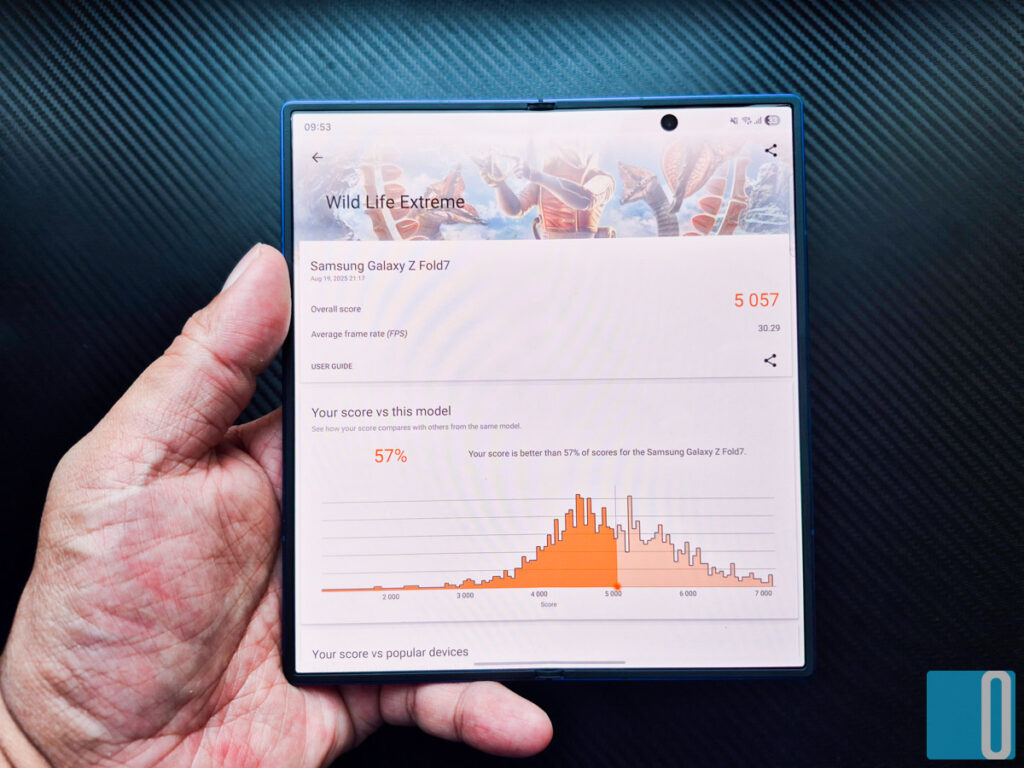
Now, let’s talk thermals. Because the Galaxy Z Fold7 is so thin, it doesn’t have as much space for a big cooling system as a traditional flagship like the S25 Ultra. That means when you push it hard say, 20 minutes of high-end gaming or 4K video editing, you’ll feel some warmth along the hinge and back panel. It’s nothing alarming, and Samsung’s thermal management kicks in gracefully. There’s a slight dip in performance after long sessions, but the phone never becomes uncomfortable to hold or too hot to use.
For everyday users, the Galaxy Z Fold7 feels instantly faster and more responsive than last year’s Fold6. Scrolling through social feeds, editing photos, or jumping between navigation and messaging apps feels effortless. Even while juggling multiple demanding apps, the system rarely stutters or shows signs of slowing down. The Snapdragon 8 Elite processor ensures that animations are smooth, transitions are crisp, and battery management remains efficient even when you’re pushing the hardware.
There’s also the subtle advantage of having Samsung’s One UI 8 working in tandem with the hardware. The optimization between software and chip is top-notch. You can open several apps in split-screen, pop-up view, or Flex Mode without running into memory issues. It’s the kind of phone that adapts to how you work, not the other way around.
If you’re upgrading from the Fold5 or earlier, you’ll immediately notice how much smoother everything feels. App optimization is better, responsiveness is sharper, and even standby battery drain is lower. Samsung has finally found the right balance between raw performance, portability, and heat management.
In short, the Galaxy Z Fold7 doesn’t just look like a premium flagship, it performs like one too. It handles everything with ease. And that’s probably the biggest compliment you can give a foldable. It finally feels seamless, fast, and reliable, without any of the “foldable quirks” we’ve come to expect.
Galaxy AI: Now It Actually Feels Useful
AI has been the buzzword of every new phone release lately, but the Galaxy Z Fold7 finally makes it feel like something you’ll actually use day to day. Samsung has taken all the Galaxy AI features it introduced with the S25 series and integrated them into the Galaxy Z Fold7’s software experience. But instead of feeling like a collection of gimmicks, these tools feel mature, polished, and well thought out, like they were built for real people for daily use.
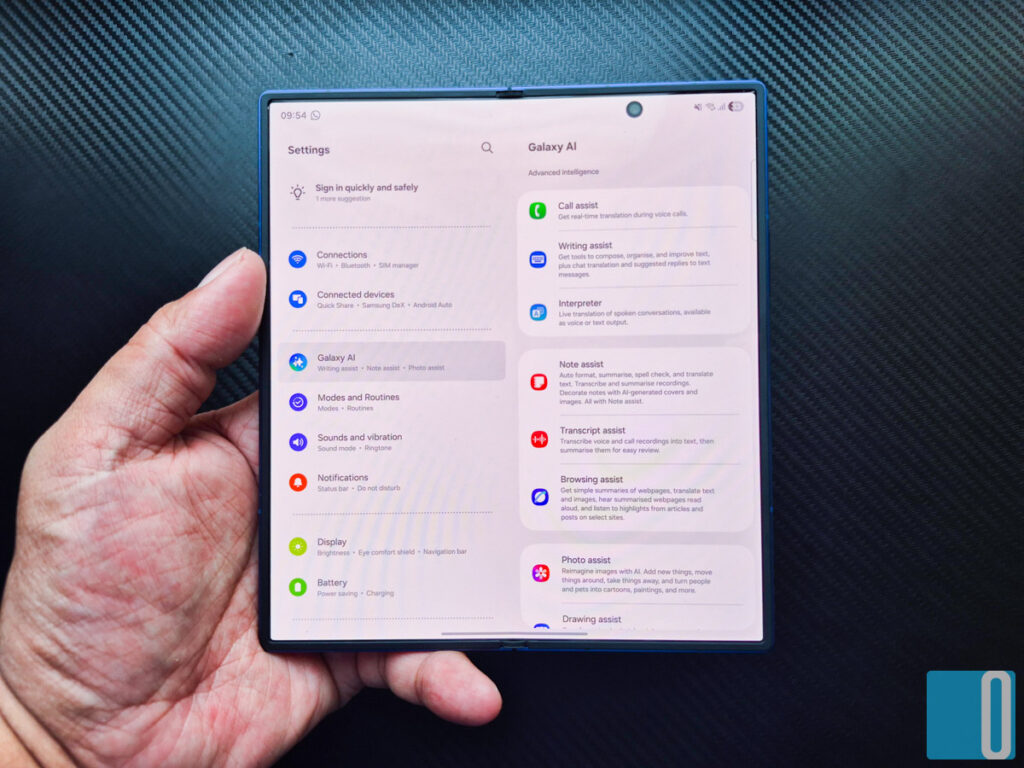
The headline act is still Circle to Search, a collaboration between Samsung and Google. If you haven’t tried it yet, it’s ridiculously handy. You simply hold down the home button (or gesture bar), draw a circle around anything on your screen, like a product, a place, a word in a foreign language, and Google instantly pulls up information about it. On the Galaxy Z Fold7’s massive inner screen, this feature shines. You can circle something on one half of the screen while keeping another app open on the other side.
Then there’s Google Gemini, which is baked into the Galaxy Z Fold7 as your AI assistant. Think of it as a smarter Google Assistant that understands context and can handle more complex tasks. You can ask it to summarize long documents, rephrase emails, or even generate creative text on the fly. When you’re working on the Galaxy Z Fold7’s larger display, Gemini actually feels like a mini productivity partner. Pair that with Samsung’s multitasking tools, and you’ve basically got a pocket-sized AI workspace.
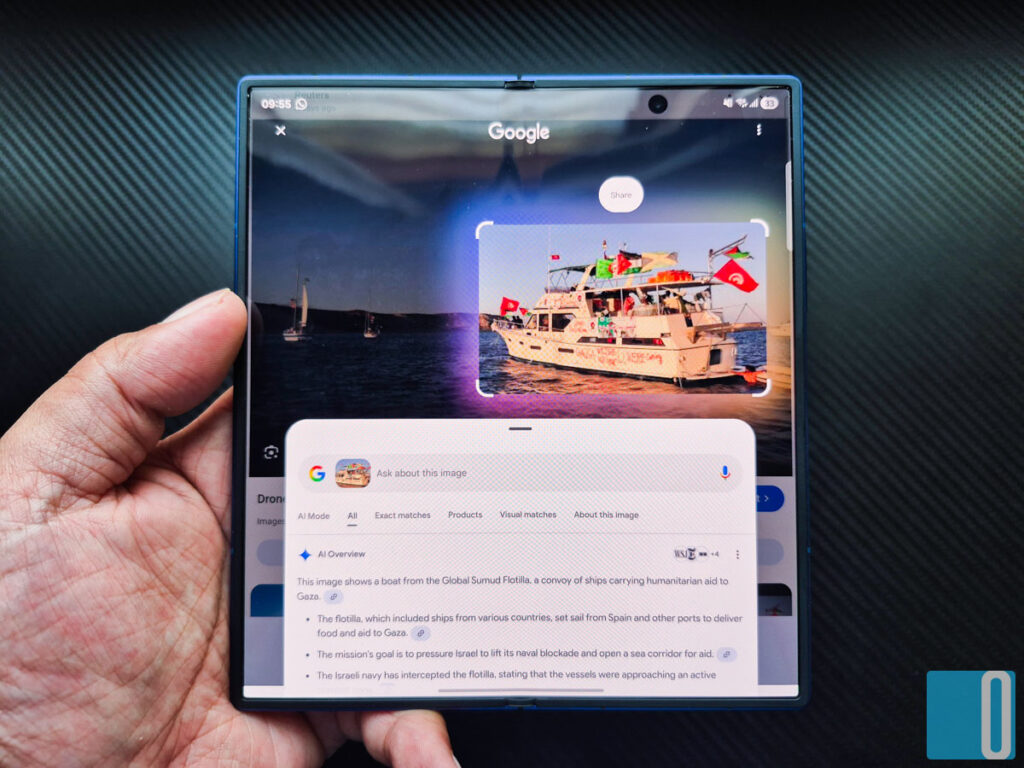
One of the most underrated but genuinely useful features is Live Transcribe and Interpreter Mode. The Galaxy Z Fold7 can transcribe and translate conversations in real time. And because of the large internal screen, the text is easy to read. You can even fold the phone halfway in Flex Mode and use it like a tiny translator stand. It’s one of those moments where the hardware and software click perfectly.
Samsung has also built in Photo Assist, and this might be the AI feature you end up using the most. It helps you edit photos intelligently, offering side-by-side previews of your edits before you confirm anything. You can erase background clutter, adjust lighting, or move objects within the frame. The best part is how natural it looks afterward. The Galaxy AI’s touch-up suggestions are subtle and realistic, unlike the overcooked filters of older editing tools. Combined with the Galaxy Z Fold7’s already impressive camera system, it gives your photos a professional polish without needing third-party apps.
For creators or anyone working on audio content, AI-powered transcription and voice editing tools are also included. You can record a voice memo and have it automatically transcribed into text, complete with punctuation and timestamps. The transcription accuracy is surprisingly solid, even with background noise. From there, you can quickly summarize the recording or edit it down using Samsung’s built-in AI editor. For tech reviewers, students, or anyone who records meetings, this is a game changer.
Samsung also added a feature called the Now Bar, and while it might sound like just another widget, it’s surprisingly useful. It’s a persistent, context-aware bar that shows things like live sports scores, timers, or your currently playing music, all in one place. It’s a nice little quality-of-life upgrade, especially on a device this big. Meanwhile, the Now Brief panel gives you an overview of your upcoming events, reminders, and daily summaries, though how much you’ll use it depends on your personal workflow.
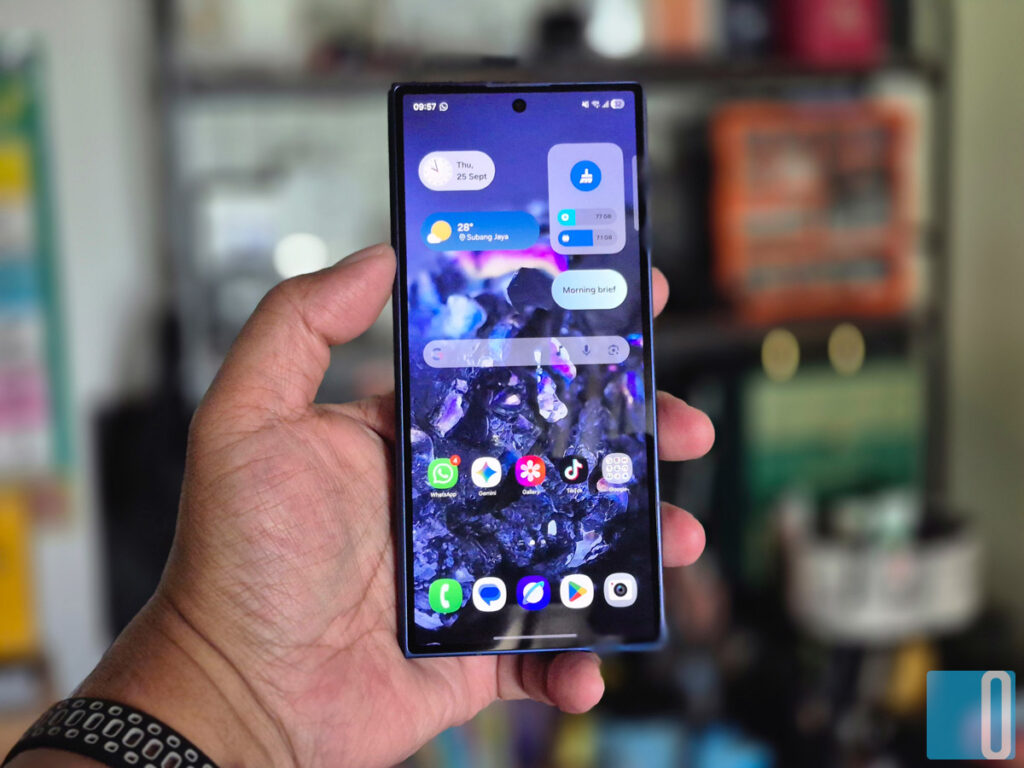
What stands out most about Galaxy AI on the Galaxy Z Fold7 is how seamlessly it fits into the experience. Nothing feels forced. You don’t have to go digging through menus to find features, they appear naturally as you use your phone. For instance, when you’re typing, the AI can suggest rewrites or translations, or when you’re editing an image, it offers context-based fixes. The entire system is designed to assist quietly rather than interrupt.
Another thing worth noting is that AI processing on the Galaxy Z Fold7 isn’t entirely cloud-based. Samsung is using a hybrid on-device and cloud model, meaning some actions (like text suggestions and photo edits) happen locally on the Snapdragon chip. This not only speeds up performance but also keeps your data more secure. And it’s something users will appreciate without even realizing it’s happening.
Overall, Samsung’s approach to AI this year feels refreshingly practical. Instead of throwing random features at the wall, the Galaxy Z Fold7 integrates smart tools that genuinely make using the phone smoother and more productive. It feels less like “AI for the sake of AI” and more like a quiet assistant working in the background to make life easier.
Battery Life and Charging
The 4,400mAh battery hasn’t grown in size, but Samsung squeezed better endurance out of it. In mixed use, the Galaxy Z Fold7 comfortably lasts a day and a half, sometimes two, depending on how much you use the inner screen. Rely more on the outer display, and it stretches further.
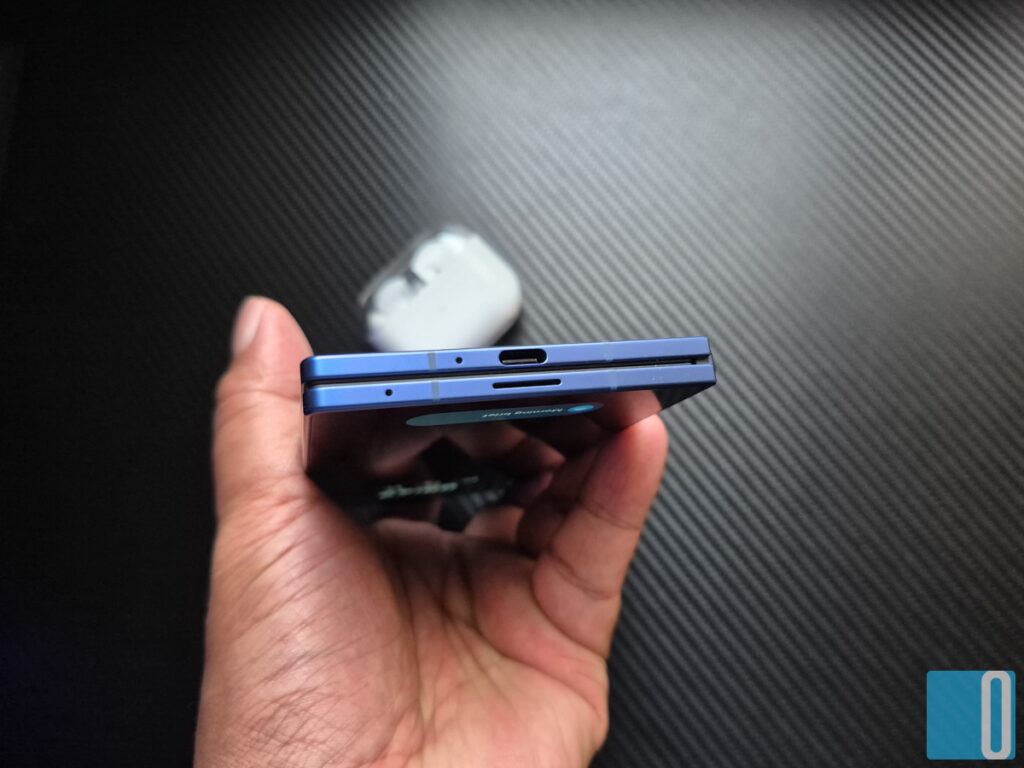
Charging, however, is where Samsung still refuses to get with the times. 25W wired charging on a phone that costs nearly eight grand MYR feels insulting. You’re looking at roughly 80 minutes for a full charge, and no, there’s no charger in the box. Wireless charging sits at 15W, which is fine, but still far from impressive. You also don’t get built-in Qi2 magnets, so you’ll need a compatible case for certain accessories.
Basically, battery life is solid; charging speed is not.
Software and Multitasking Magic
Running One UI 8 on Android 16, the Galaxy Z Fold7 feels polished and cohesive. Samsung’s interface is at its best here. Smooth animations, smart layout adjustments, and tons of customization. What really elevates the Galaxy Z Fold7 is how it handles multitasking. You can have two full-sized apps side by side, or up to eight in pop-up and split modes if you’re feeling chaotic.
The revamped split-screen mode is a joy. You can resize, drag, and switch apps effortlessly, and moving apps between the outer and inner display is seamless. The Flex Mode, which lets you half-fold the phone like a mini laptop, works perfectly for YouTube or video calls.
That said, not every app is optimized. Some games or niche apps still squish their interfaces or leave black bars, but that’s more on the developers than Samsung. For most daily tasks, the experience feels refined and genuinely productive.
Also, the seven-year update promise deserves praise. With software and security updates guaranteed until 2032, this might be the longest-lasting Android device you can buy today.
Camera: Flagship-Level Shots with a Foldable Twist
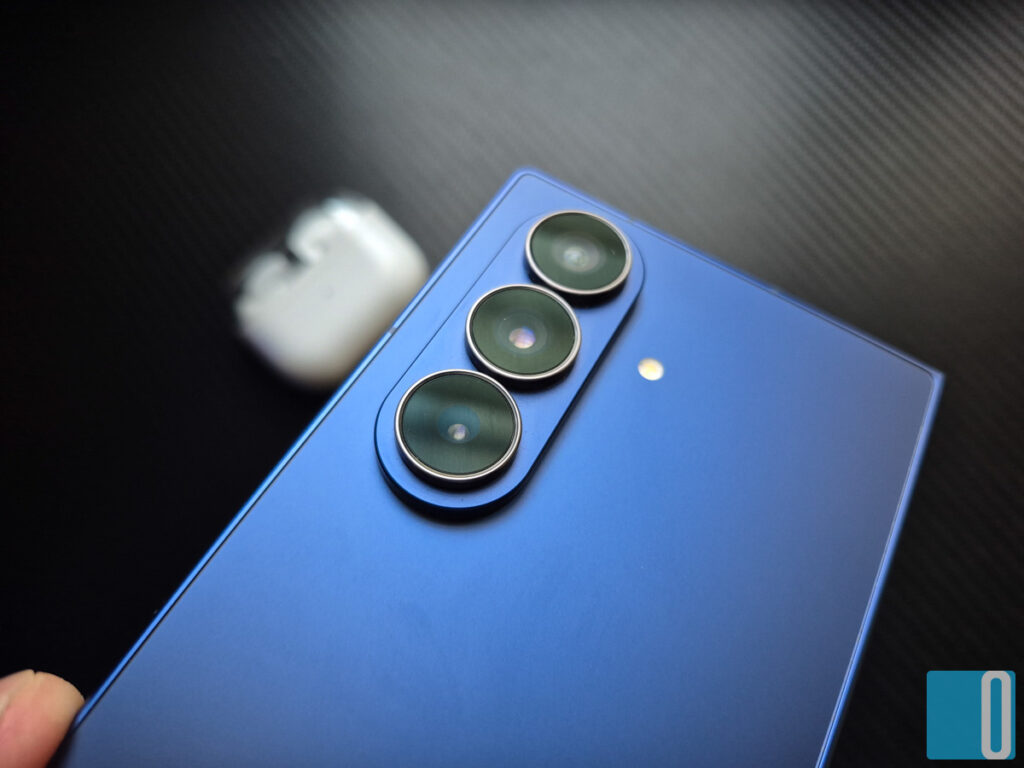
Samsung didn’t hold back on the Galaxy Z Fold7’s camera system. For years, one of the biggest criticisms of the Fold series was that the cameras always felt a step behind Samsung’s traditional flagships. Good, but not Ultra good. That’s no longer the case. The Galaxy Z Fold7 closes that gap in a big way, thanks to the inclusion of the same 200MP main sensor used in the Galaxy S25 Ultra and S25 Edge. This instantly gives it the kind of photographic muscle that makes it feel like a true flagship, not just a foldable trying to catch up.
That 200MP primary lens is a beast. It captures an incredible level of detail and sharpness, even when you zoom in or crop your photos afterward. By default, it bins down to 12MP shots, combining data from multiple pixels to improve light capture and reduce noise so you get bright, clear photos even in lower-light situations. There’s a natural depth to portraits that makes backgrounds melt away nicely. It’s the kind of performance that makes you forget you’re shooting on a foldable.
Then you’ve got the 12MP ultrawide camera, which has quietly become one of the Galaxy Z Fold7’s most pleasant surprises. Samsung upgraded this sensor to take in more light and produce sharper details, and it shows. Colors pop without going overboard, and the distortion that used to plague wide-angle shots has been tamed. It’s especially fun for travel or landscape photography, where that extra field of view really opens things up.
The 10MP 3x telephoto lens is a familiar friend, offering reliable zoom performance for portraits and mid-range shots. It provides up to 30x digital zoom, though the sweet spot is around 10x, where images still look impressively detailed. While it doesn’t reach the periscope-style zoom power of the Galaxy S25 Ultra, it’s no slouch. For everyday use like getting closer to a subject without moving your feet, is fantastic. And portrait mode using this telephoto lens produces lovely results with accurate edge detection and creamy background blur.
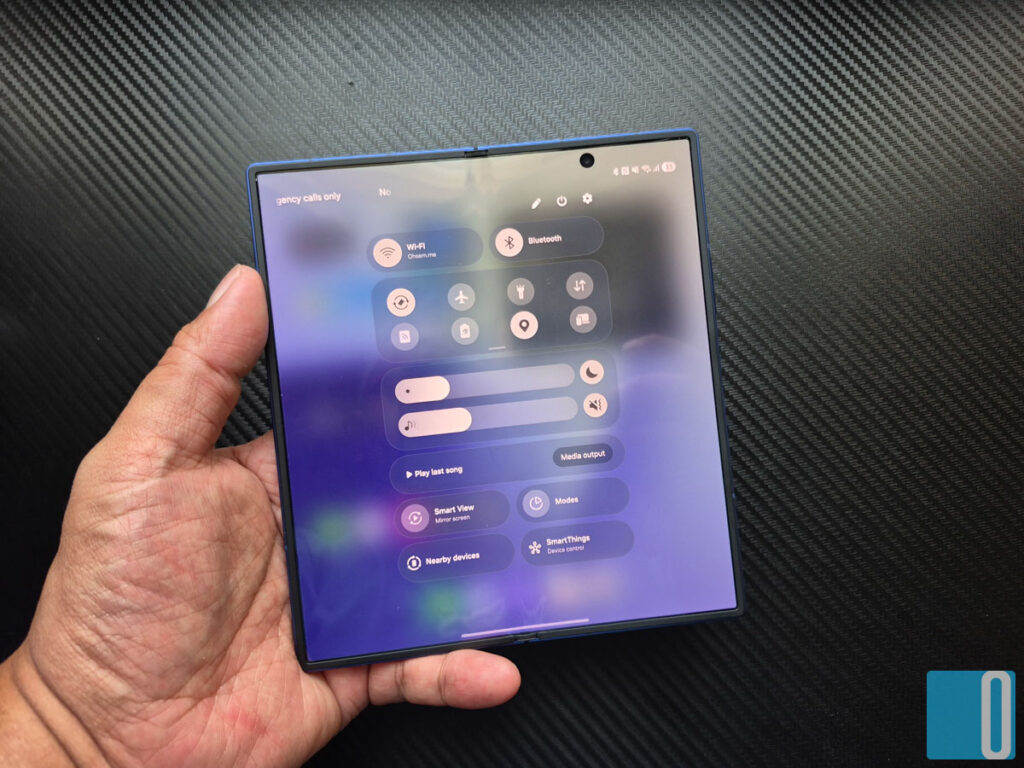
On the selfie side, Samsung made a huge improvement. Gone is the underwhelming 4MP under-display camera from the previous Fold. In its place, the Galaxy Z Fold7 now features a much more usable 10MP punch-hole camera on the inner display, paired with another 10MP front camera on the outer screen. Both perform well for casual selfies and video calls, producing clear, bright images with solid dynamic range.
But the real magic trick is when you use the main 200MP rear camera for selfies. Simply unfold the phone, flip to the rear cameras, and use the outer screen as your viewfinder. The difference in quality is night and day. Sharper details, richer colors, and far better depth. Once you start shooting selfies that way, it’s hard to go back.
Video recording is equally impressive. The Galaxy Z Fold7 camera can shoot up to 8K at 30fps or 4K at 60fps, with rock-steady stabilization that makes handheld footage look smooth and professional. The foldable form factor actually helps here. You can partially fold the phone to 90 degrees and use it like a mini camcorder, which gives you a much more stable grip when shooting videos or vlogs. If you’re the kind of person who records travel clips, reels, or cinematic b-roll, you’ll love how versatile this setup feels.
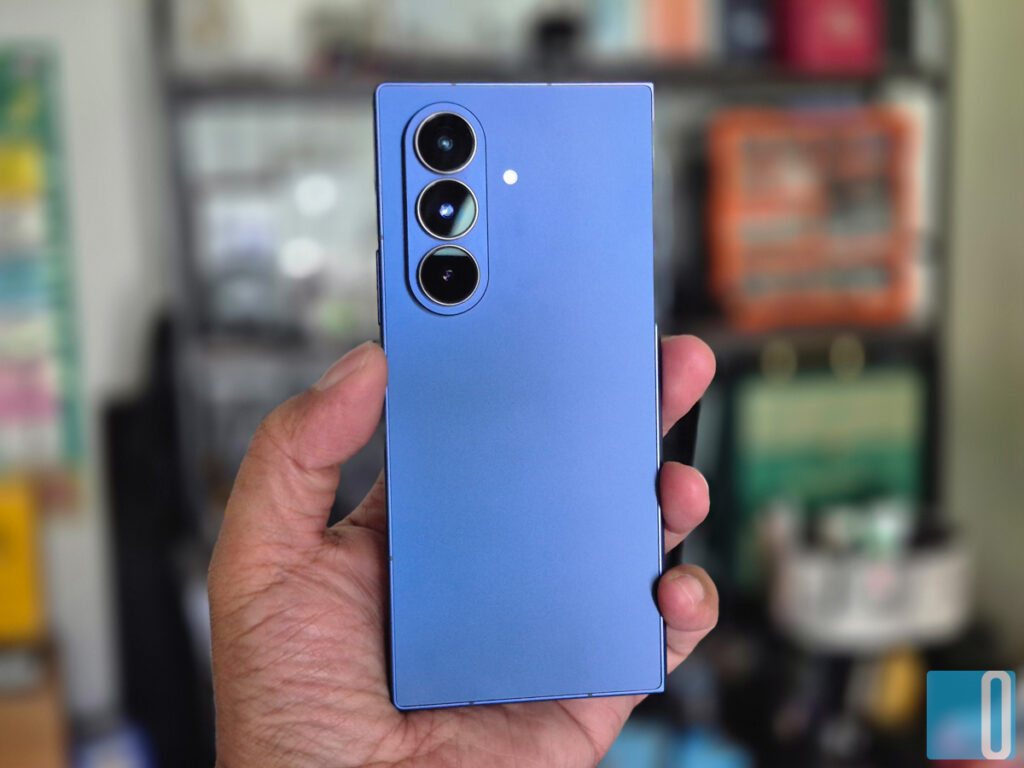
Where Samsung’s camera processing still divides opinions is in color tone and post-processing. As always, images lean toward the warmer, punchier side, with greens and yellows often more pronounced than they should be. It gives photos that signature “Samsung pop,” which some people love and others find a bit overdone. In most lighting conditions, the AI does a great job balancing exposure and contrast, but in night mode, the Galaxy Z Fold7 sometimes pushes things too far. The Galaxy AI image enhancement occasionally smooths out fine details to reduce noise, which can make certain subjects like textured walls or foliage look slightly cartoonish.
Still, the results overall are consistently excellent. Daylight shots are crisp, HDR performance is strong, and low-light results are better than ever for a foldable. The main camera’s dynamic range is wide, and shadows retain a good amount of detail. The upgraded processing pipeline also ensures faster shot-to-shot performance, even when taking 200MP photos. The shutter lag that plagued earlier foldables is virtually gone.
For content creators, the combination of hardware, AI, and flexibility makes the Galaxy Z Fold7 one of the best foldable phones for photography and videography in 2025. You can literally set it down like a tripod in Flex Mode, use it to frame shots perfectly on that big internal display, or edit your footage immediately using Samsung’s built-in tools and Galaxy AI assistance.
So, while the Galaxy Z Fold7’s camera setup might not completely dethrone the Ultra series, it finally brings foldables into the flagship conversation. You’re no longer trading photo quality for form factor. The Galaxy Z Fold7 proves that you can have cutting-edge photography and a foldable design in one package. It makes the idea of a “foldable flagship” feel more real than ever.
Sample Photos
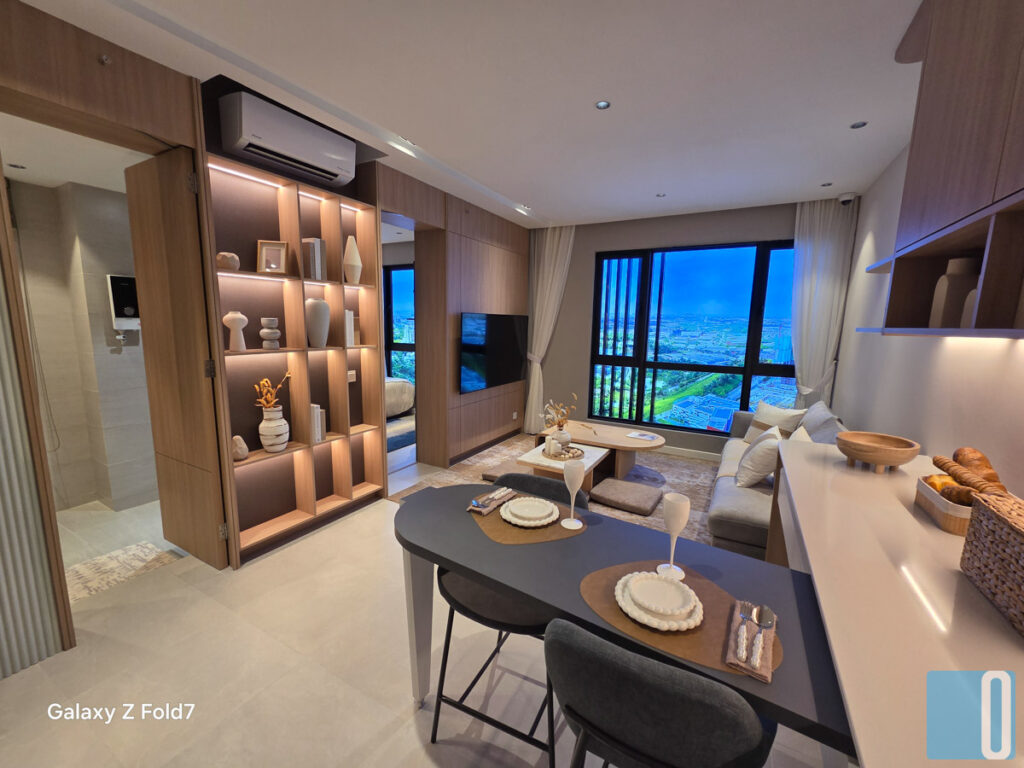
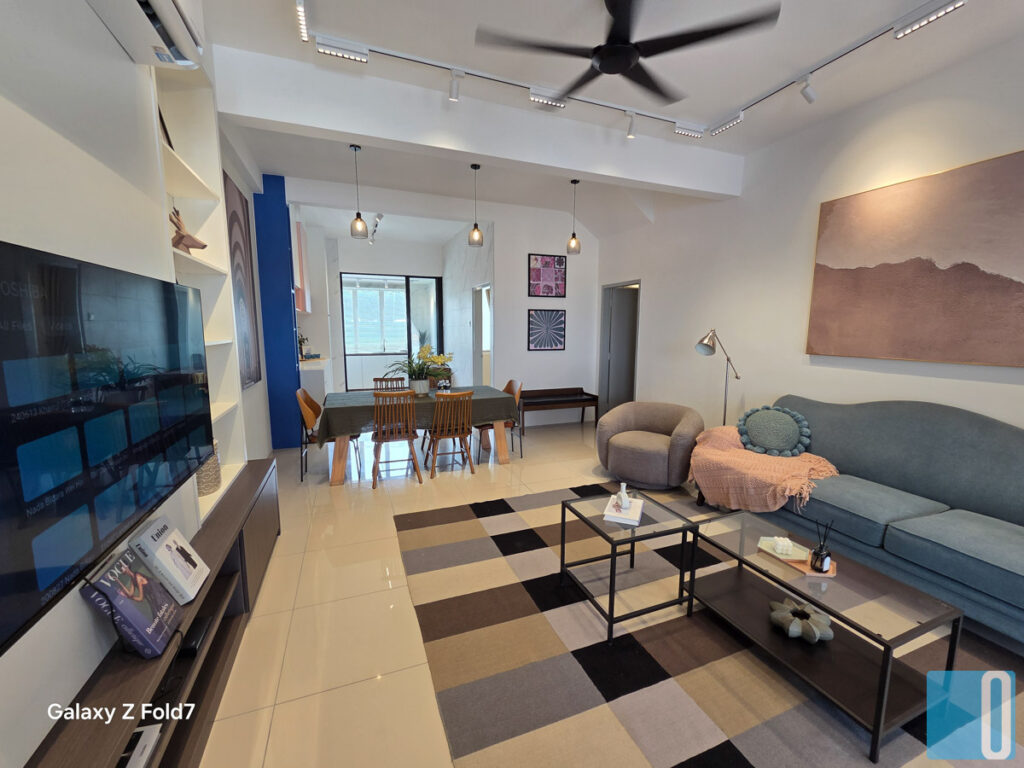
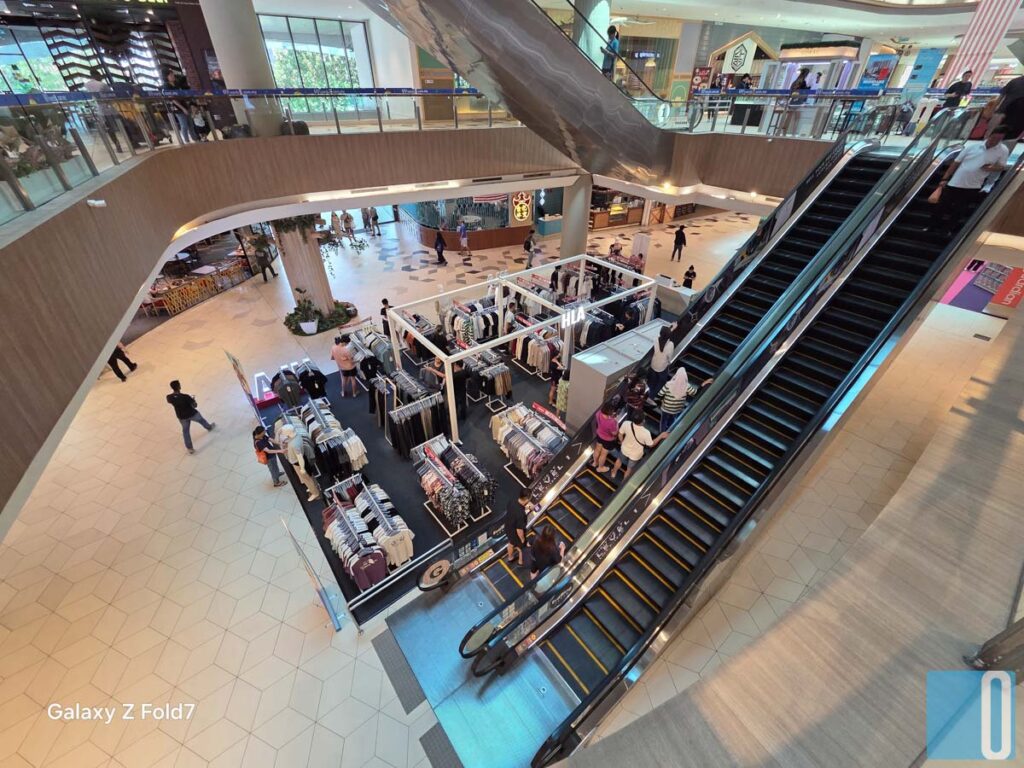


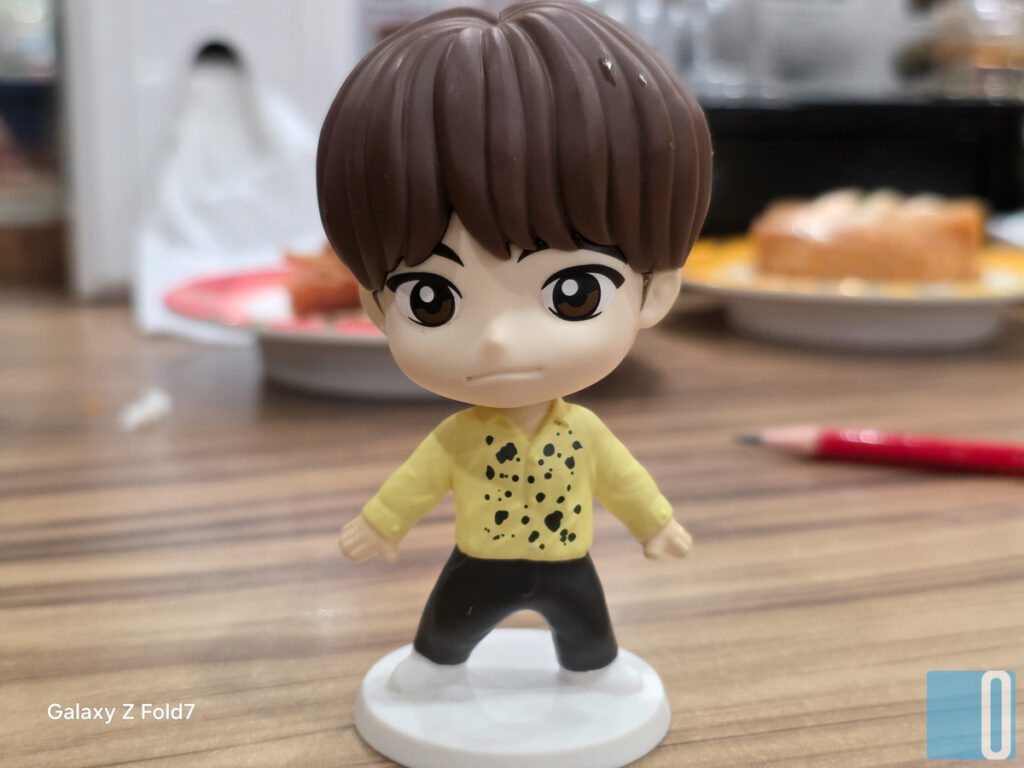
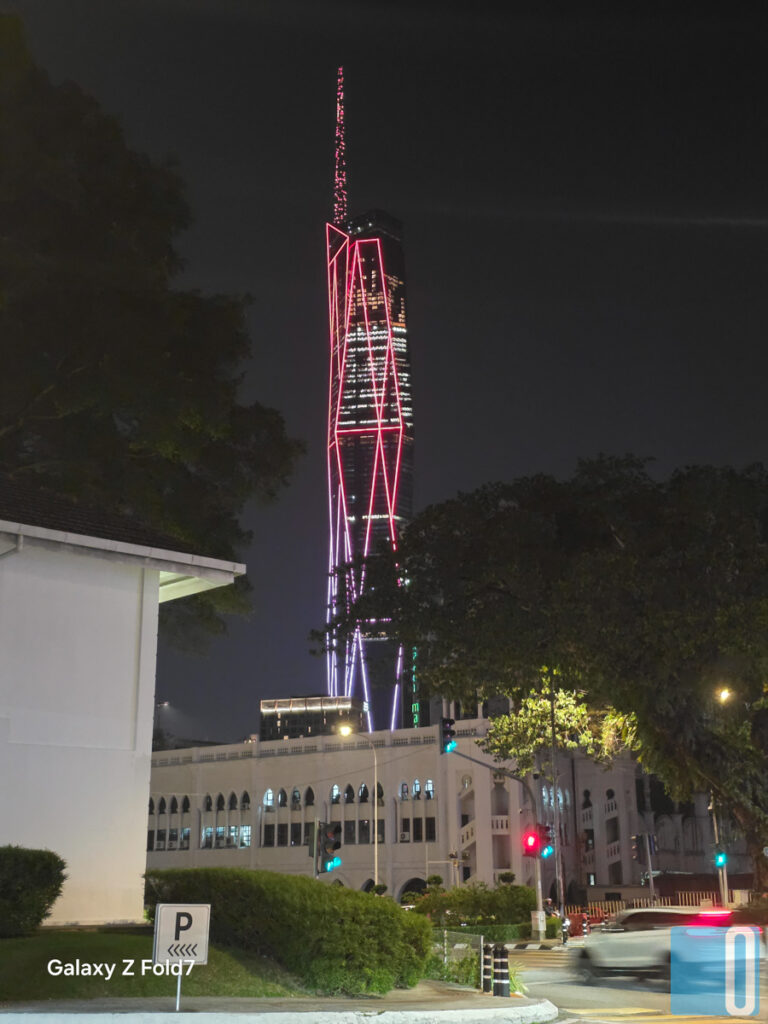
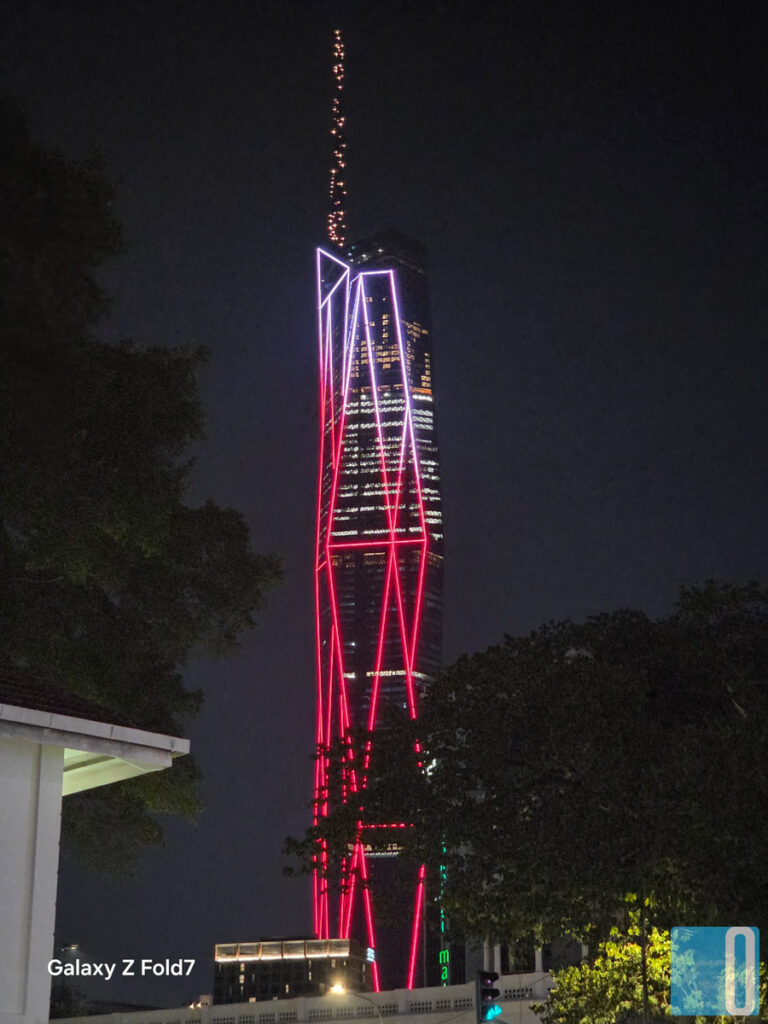

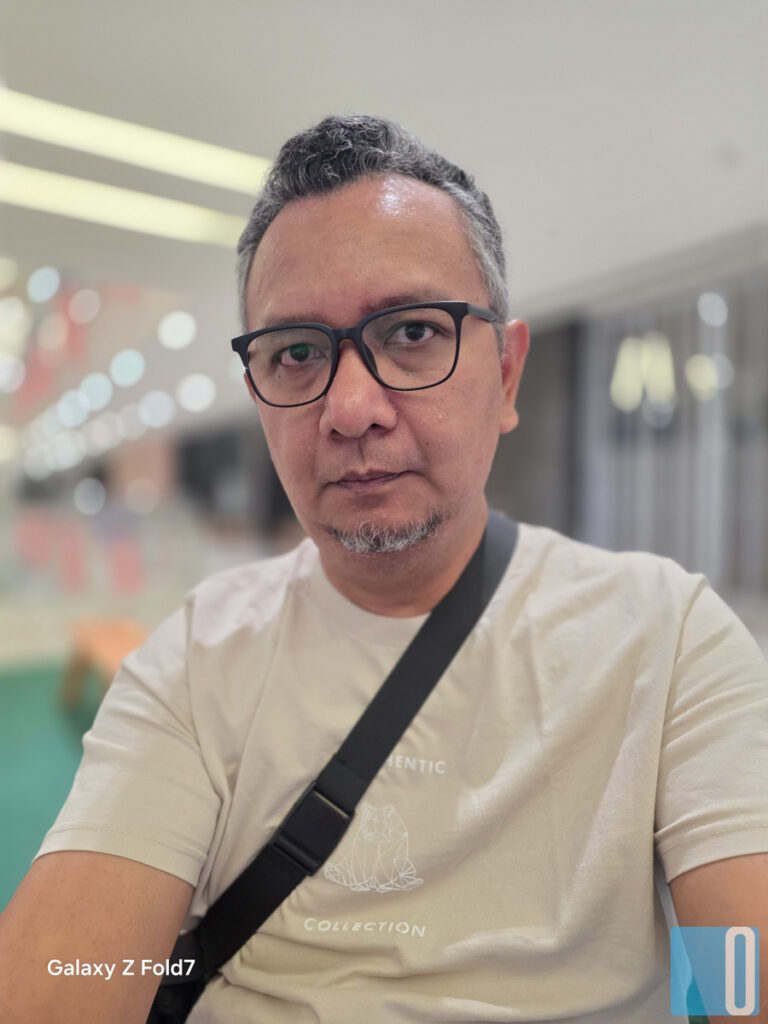
My Verdict: The Fold That Finally Feels Complete
So, is the Galaxy Z Fold7 worth it? If you’ve been waiting for Samsung to finally perfect the formula, this is the one. It’s the thinnest, lightest, and most refined Fold yet. The near-invisible crease, flagship performance, great cameras, and brilliant software make it feel like a real everyday device.
Of course, it’s not perfect. The lack of S Pen support stings. The 25W charging speed is painfully outdated. And despite the IP48 rating, it’s still not the phone you want around sand or dust. Plus, at MYR7,799, this is not a casual buy.
But if you love the idea of a tablet that folds into your pocket, the Galaxy Z Fold7 nails that concept better than ever before. For anyone who spends hours reading, multitasking, sketching, or working on the go, this phone will feel like magic.
Either way, the Galaxy Z Fold7 proves that foldables aren’t a fad anymore. They’re here to stay, and this one just set the new bar.
More info: https://www.samsung.com/my/smartphones/galaxy-z-fold7/

